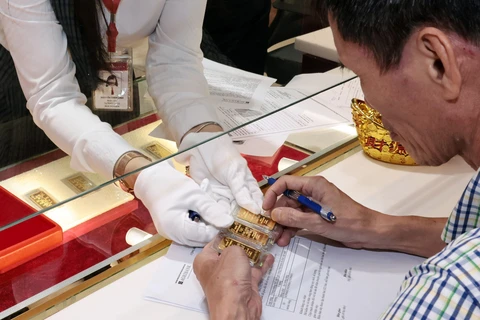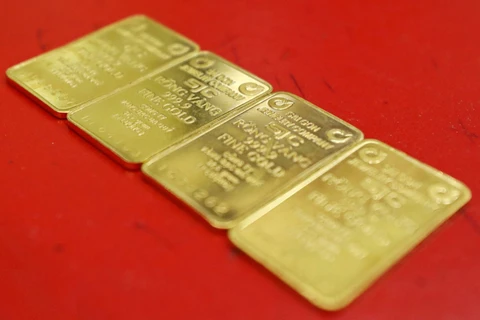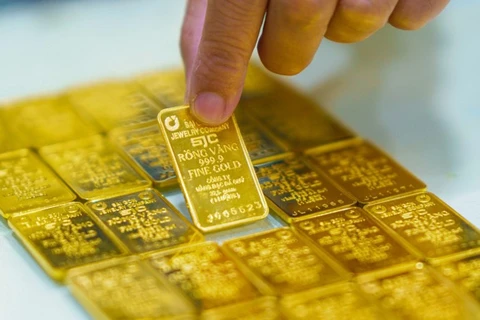
Hanoi (VNA) - On May 7th, the World Gold Council released a report on gold demand trends for the first quarter of 2024. Vietnam recorded a 12 percent increase in demand for gold bullion and coins, with total consumer demand rising 6 percent compared to the same period last year.
Additionally, the Council highlighted that Vietnam experienced the most robust growth in demand for gold bullion and coins in the first quarter since 2015. Domestic investors were attracted by the sharp rise in gold prices during the first quarter, especially in the face of rising energy prices - projected to drive inflation - and the depreciation of the local currency against the USD. The price difference for gold bullion reached a record high of 650 USD per ounce.
To address this situation, the Vietnamese government has eased supply restrictions while the State Bank of Vietnam plans to continue holding auctions to sell gold bullion into the market by the end of April, the report stated.
Globally, the report noted that jewelry demand remained stable despite record-high prices, dropping only 2 percent compared to the same period last year. Jewelry demand in Vietnam, Thailand, and Indonesia all saw similar declines in the first quarter, decreasing by 10 percent -12 percent due to the late first-quarter gold price surge that limited buying in March.
According to Shaokai Fan, the World Gold Council's Head of Asia-Pacific (excluding China) and Global Head of Central Banks, Vietnam's jewelry demand in the first quarter marked its fifth consecutive decline, dropping over 10 percent to 4 tonnes, the lowest quarterly demand since 2015. Despite a surge in demand during the Lunar New Year and God of Wealth Day in February, high gold prices significantly impacted jewelry demand.

Louise Street, Senior Markets Analyst at the World Gold Council, maintained that gold prices have risen to all-time highs since March, despite common hurdles such as a strong USD and increasing interest rates.
Several factors contributed to the recent gold price surge, including increasing geopolitical risks and ongoing macroeconomic instability driving demand for gold as a safe-haven asset. Additionally, continuous and heavy gold purchases by central banks, strong investments in the OTC market, and net gold buying in the derivatives market all played roles in pushing gold prices higher.
The World Gold Council's report also showed that global gold demand (including OTC market purchases) rose 3 percent compared to the same period in 2023, reaching 1,238 tonnes, marking the strongest first-quarter growth since 2016.

Central banks actively increased their gold reserves, adding 290 tonnes. This substantial buying by mainstream banks underscores gold's importance in international reserve portfolios amid a volatile market and increasing global risk./.























